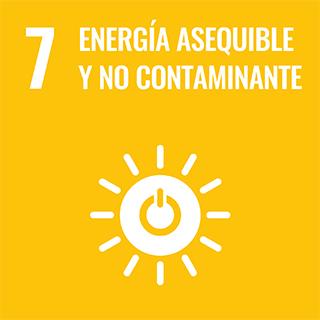
Indexado en
Licencia y uso
Impacto en los Objetivos de Desarrollo Sostenible (ODS)

Análisis de autorías institucional
Prado Rujas IAutor o CoautorCalculating Heavy-Duty truck energy and fuel consumption using correlation formulas derived from vecto simulations
Publicado en:Sae Technical Papers. 2019-April (April): - 2019-04-02 2019-April(April), DOI: 10.4271/2019-01-1278
Autores: Tansini A; Fontaras G; Ciuffo B; Millo F; Prado Rujas I; Zacharof N
Afiliaciones
Resumen
The Vehicle Energy Consumption calculation Tool (VECTO) is used in Europe for calculating standardised energy consumption and CO2 emissions from Heavy-Duty Trucks (HDTs) for certification purposes. The tool requires detailed vehicle technical specifications and a series of component efficiency maps, which are difficult to retrieve for those that are outside of the manufacturing industry. In the context of quantifying HDT CO2 emissions, the Joint Research Centre (JRC) of the European Commission received VECTO simulation data of the 2016 vehicle fleet from the vehicle manufacturers. In previous work, this simulation data has been normalised to compensate for differences and issues in the quality of the input data used to run the simulations. This work, which is a continuation of the previous exercise, focuses on the deeper meaning of the data received to understand the factors contributing to energy and fuel consumption. Fuel efficiency distributions and energy breakdown figures were derived from the data and are presented in this work. Correlation formulas were produced to calculate the energy loss contributions of individual components and resistances (air drag, rolling resistance, axle losses, gearbox losses, etc.) over the Regional Delivery and Long Haul cycles, given a limited number of input parameters such as vehicle characteristics and average component efficiencies. Default values and meaningful ranges of variation of these parameters obtained from the data of the fleet are also reported in this work. The importance of air drag and rolling resistance losses are highlighted since these losses account for about 70% of the energy consumed downstream the engine. Finally, based on the correlation formulas to calculate the individual energy losses, a method is presented that calculates the final energy consumption and CO2 emissions for all the regulated HDTs classes and that does not rely on the use of VECTO.
Palabras clave
Indicios de calidad
Impacto bibliométrico. Análisis de la aportación y canal de difusión
El trabajo ha sido publicado en la revista Sae Technical Papers debido a la progresión y el buen impacto que ha alcanzado en los últimos años, según la agencia Scopus (SJR), se ha convertido en una referencia en su campo. En el año de publicación del trabajo, 2019, se encontraba en la posición , consiguiendo con ello situarse como revista Q2 (Segundo Cuartil), en la categoría Safety, Risk, Reliability and Quality.
Desde una perspectiva relativa, y atendiendo al indicador del impacto normalizado calculado a partir del Field Citation Ratio (FCR) de la fuente Dimensions, arroja un valor de: 1.96, lo que indica que, de manera comparada con trabajos en la misma disciplina y en el mismo año de publicación, lo ubica como trabajo citado por encima de la media. (fuente consultada: Dimensions Jun 2025)
De manera concreta y atendiendo a las diferentes agencias de indexación, el trabajo ha acumulado, hasta la fecha 2025-06-01, el siguiente número de citas:
- Scopus: 11
- Open Alex: 11
- OpenCitations: 8

